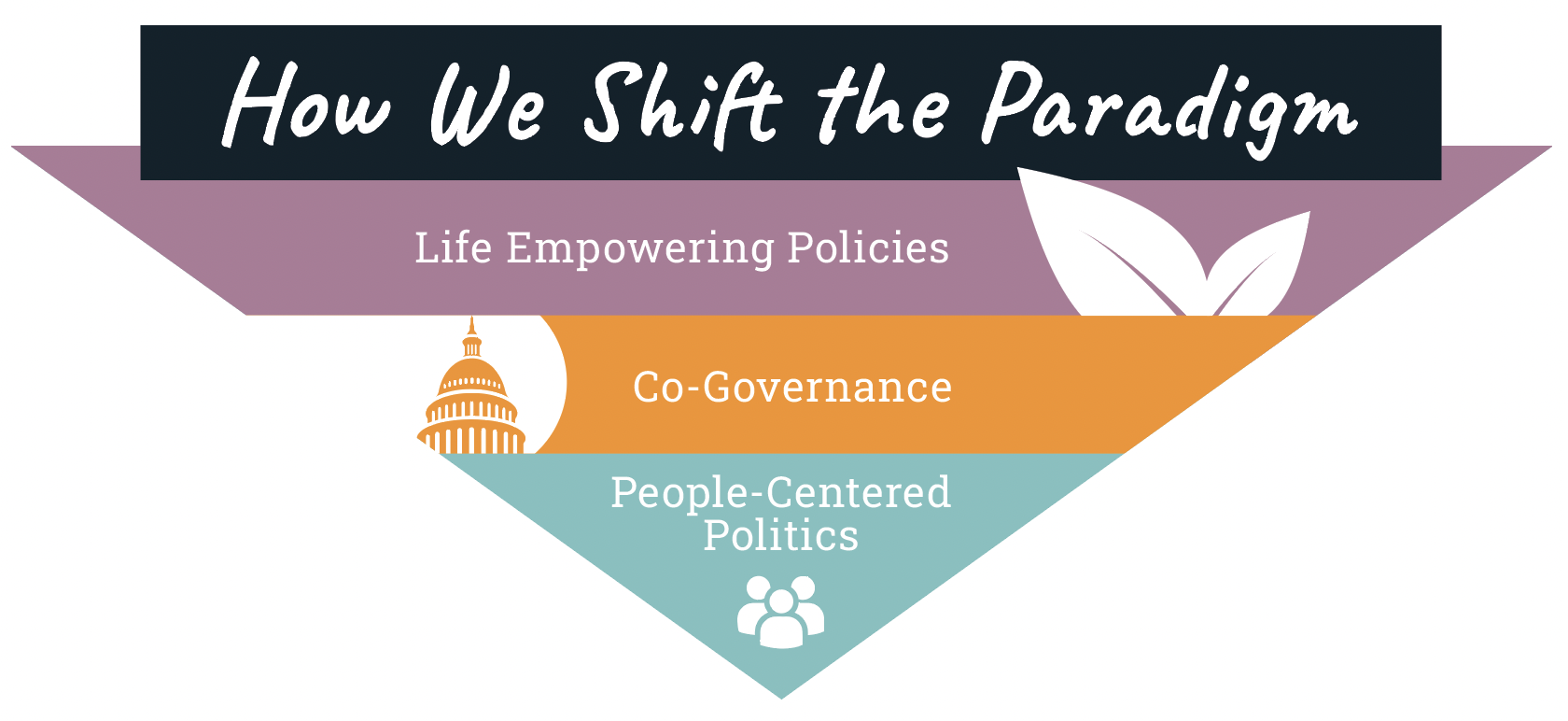The anxiety we feel today is clouding our hope for the future and is the inescapable reality we are facing now. 60% of Americans live paycheck to paycheck1. As we see the revolving political messaging in Washington from either side show little progress to address these issues, more Americans are struggling to have their basic needs met and continue to live less and less comfortably. Many of us no longer dream for a future inhabited by ourselves and our children, but rather dread it. It’s important that we understand this tumultuous period in our history was intentional – it was manufactured by a complex mix of greed by bureaucrats and corporations, neither of which have the best interest of Americans in mind. The reason why we are seeing such little progress is because the power dynamic has been disproportionately placed into the hands of corporate special interests. In fact the culture of prioritizing profit over people has become normal and accepted, however It wasn’t always this way.
The death of the defined-benefit pension plan
Up until the 1970’s-80’s, hardworking families could rely upon an extensive retirement fund which their employer directly contributed to. This fund could satisfy cost of living needs and support the development of generational wealth. However, following the Revenue Act of 1978, major corporations lobbied congress to approve the 401k model, which in turn effectively replaced a more beneficial pension structure. Retirement contributions were shifted upon workers to bare, and the newly established 401k’s were far more volatile and less reliable.
The death of labor
Throughout the 1970’s, employers took greater advantage of previously established legal structures which were hostile to unions (National Labor Relations Act and Taft-Hartley Amendment) to facilitate their demise. This, compounded with economic shifts which took bargaining power away from workers, such as globalized outsourcing and de-industrialization, led to an extreme diminishment of union presence nationwide. This loss of union power has been directly correlated with worsening labor conditions and pay which has largely stagnated in comparison to inflation.
Sweeping de-regulation
Wide-spread deregulation of corporations through the 70’s, 80’s, and 90’s was present across industries like telecommunications, transportation, energy utilities, and many others. This further enabled various corporations to consolidate market power and engage in monopolistic practices, catalyzing market collapses, harming local economies, disempowering laborers, cheating consumers, and destroying the environment (all the while often delivering a less beneficial and more expensive product).
Supply-side economics
The staggering wealth disparity of today can partly be attributed to the Supply-Side, or “Reaganomics” policies of the 1980’s, which dramatically reduced taxes for corporations and the most wealthy individuals within society. Legislators and lobbyists justified these policies by arguing that expanding the supply capacity of major corporations through tax cuts would allow wealth to trickle-down to the rest of the economy. In reality, the top 1% merely accumulated that wealth for themselves, siphoning funds away from public programs and plunging the US into deficit and debt.
The death of public assistance
Finally, the onslaught of attacks levied upon public assistance programs and social safety nets through the 1990’s had detrimental impacts. Reductions to welfare programs and public assistance services, as well as the expanded privatization of once-regulated or public industries, exacerbated the harms of our severe economic downturns in recent years.
It does not need to be this way.
By shifting the paradigm of how our legislators operate and the principles which guide them, we can reverse the harms of the last 40 years to build an equitable future which secures the present and future hope of every American, especially among marginalized communities that have been ignored for decades.



